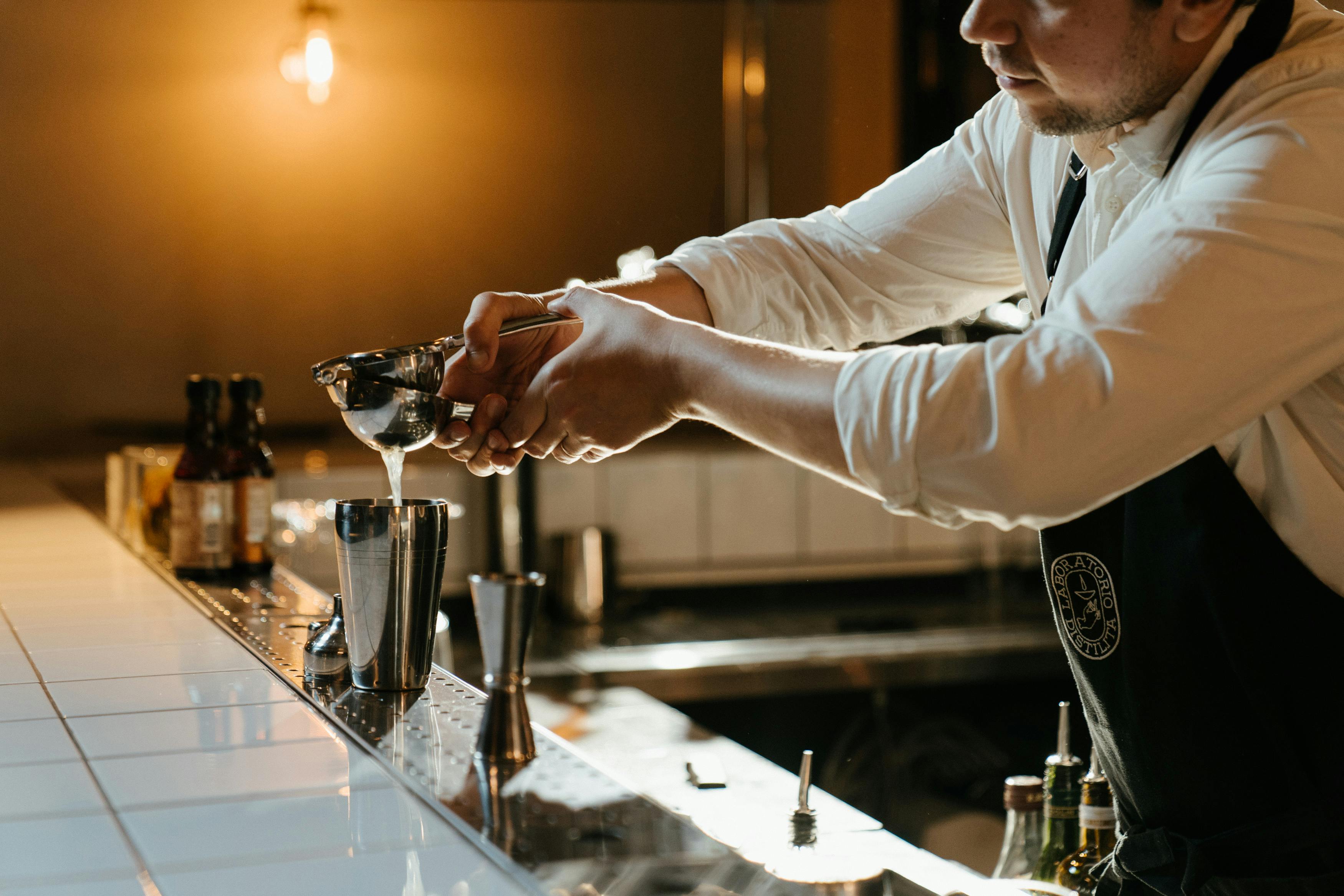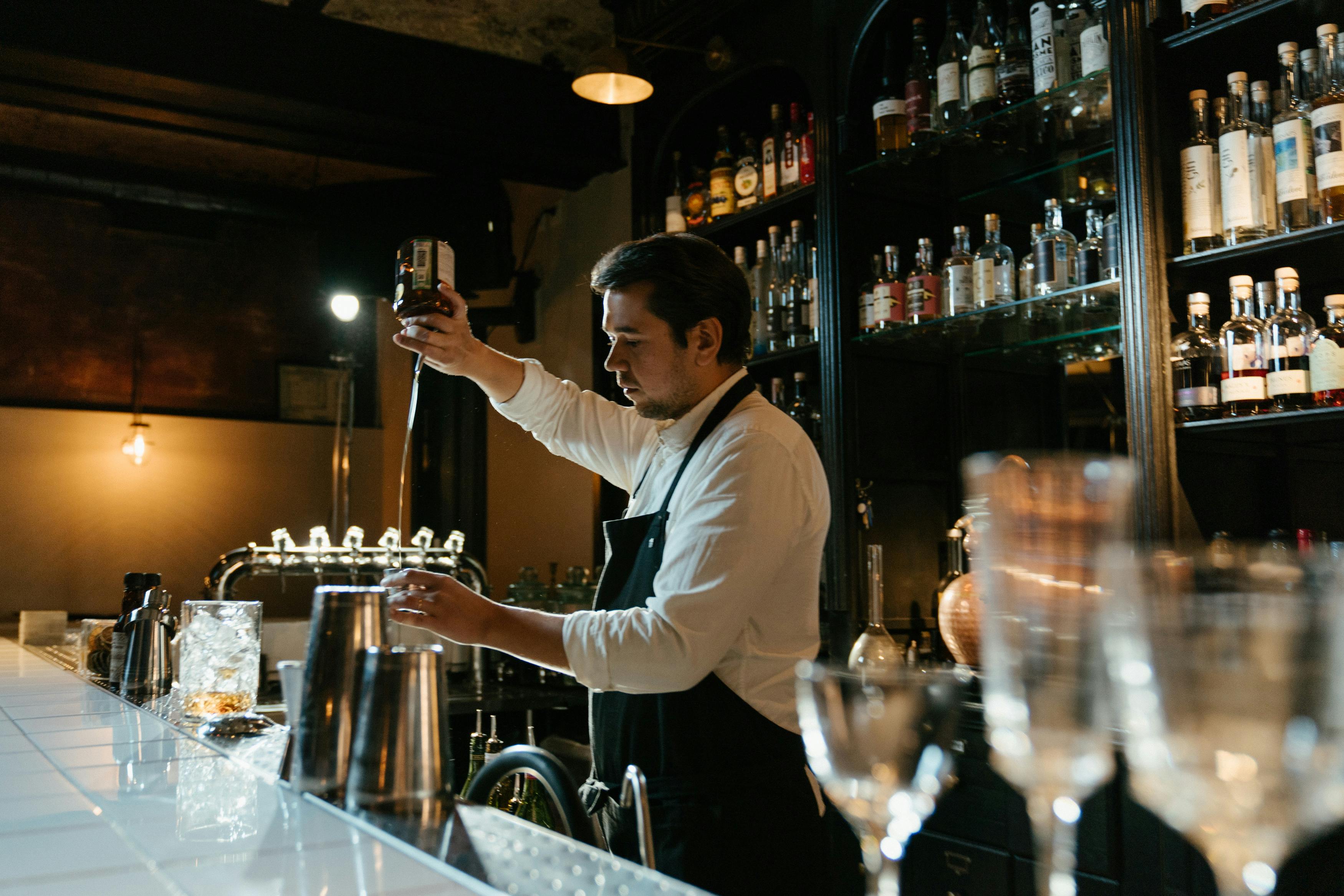Distilling alcohol is a method of separating mixtures based on differences in volatilities of components in a boiling liquid mixture. It is a method used to produce concentrated forms of alcohol such as whiskey, gin and vodka. Distillation involves boiling the mixture and then collecting and condensing the vapors. The vapors are then collected and cooled to separate the pure alcohol from other components. The process of distilling alcohol can be done at home or commercially, depending on the desired product.Distilling alcohol is the process of purifying a liquid by heating it to the boiling point, condensing the resulting vapor, and collecting the droplets that form. It is commonly used to produce alcoholic beverages, such as whiskey and vodka, but can also be used for non-alcoholic purposes such as producing essential oils. The process works by separating the components of a liquid based on their boiling points so that each component can be collected separately.
Distillation
Distillation is a process of separating or purifying components from a liquid mixture by using the differences in their boiling points. It is one of the oldest methods of separating mixtures, and is still widely used in industrial processes today. Distillation has been used to make alcohol, essential oils, medicine, and even in the production of food products. There are many different types of distillation, each with its own unique characteristics and uses.
Fractional Distillation
Fractional distillation is an effective method for separating liquids that have similar boiling points but slightly different volatility. This process involves heating a mixture of two or more liquids to its boiling point and then condensing the vapor as it rises from the boiling liquid. The different liquids are separated according to their boiling point and condense into separate fractions, or containers. Fractional distillation can be used to purify volatile liquids such as alcohols and organic compounds.
Vacuum Distillation
Vacuum distillation is a type of distillation that uses lower pressure than atmospheric pressure to reduce the boiling point
Benefits of Distilling Alcohol
Distilling alcohol is a process of purifying and concentrating the alcohol content of a liquid. This process separates water from the other components in the liquid, resulting in a more pure form of alcohol. Distillation also increases the concentration of flavors and aromas, providing a much more flavorful and aromatic product. The process of distillation is an ancient one, and has been used for centuries to create spirits such as whiskey, brandy, gin, rum and vodka.
One major benefit of distilling alcohol is that it can produce higher-quality alcoholic beverages with fewer impurities than those produced without distillation. Distilled beverages are less likely to contain bacteria or contaminants that can cause illnesses or spoilage. Furthermore, distilled alcoholic beverages have a longer shelf life than those that are not distilled, making them more economical over time.
Another advantage of distilling alcohol is that it allows for greater control over the flavor profile and aromas of the finished product. Distillation removes any undesired flavors or aromas from the liquid while preserving desirable flavors and aromas. This allows for greater control over the quality
What Equipment Is Required For Distilling Alcohol?
Distilling alcohol requires a few pieces of equipment to be successful. The most important piece is the still, which can either be a pot still or a reflux still. A pot still is a simple device that is used to heat up and boil the mash, while a reflux still uses a condenser to cool down and separate the liquid into different fractions. Other pieces of equipment include fermentation tanks, thermometers, collection containers, hoses, and a hydrometer. Additionally, some distillers might use chillers or pumps to help with the process.
When it comes to the actual distillation process, there are several steps involved. First, the mash needs to be heated up and fermented in order to create alcohol. Once this process is complete, it needs to be distilled in order to separate out the various components of alcohol. The distilled liquid then needs to be collected and stored in clean containers for later use. Finally, it can be blended with other ingredients or aged in barrels if desired.
In conclusion, distilling alcohol requires several pieces of equipment including a still,
Ingredients Needed For Distilling Alcohol
Distilling alcohol requires several key ingredients. The first and most important ingredient is a fermentable sugar source such as grain, fruit, honey, or molasses. This sugar source is then combined with water and yeast to create a mash that can be fermented. During fermentation, the yeast consumes the sugar and converts it into ethanol and carbon dioxide.
The next ingredient needed to distill alcohol is a distillation apparatus. This typically consists of a still, which is a large metal container that holds the mash, and various other parts such as tubes, valves, and condenser coils. The still is heated either directly or indirectly to create steam that rises from the mash and passes through the tubes of the still into the condenser coil where it cools back into liquid form.
The final ingredients needed for distilling alcohol are patience and skill. Distilling requires attention to detail in order to ensure that only the desired components of the mash are collected in liquid form, while other unwanted components are left behind. If done correctly, this process will produce high-proof alcohol with minimal impurities.
In conclusion,

Preparing for Distilling Alcohol
Distilling alcohol is a process that requires careful preparation and consideration. Before you begin distilling, it is important to understand the process and what equipment and ingredients you need. Here are some tips on how to prepare for distilling alcohol.
Gather the Necessary Equipment
Before you start distilling, make sure you have all the necessary equipment, including a still, a heat source, a thermometer, an airlock, a hydrometer and collection vessels. You will also need an ingredient for fermentation such as yeast or sugar. Additionally, it is important to have all the safety equipment such as protective gloves and eyewear.
Choose Your Ingredient
The type of ingredient you choose will determine the type of distilled alcohol you end up with. Common ingredients include grains like barley or wheat, fruits like apples or grapes, and vegetables like potatoes or corn. Each ingredient will require a different fermentation process and will result in different flavor profiles.
Sanitize All Equipment
Distilling Alcohol
Distilling alcohol is the process of separating the components of a liquid mixture through selective boiling and condensation. The process involves heating the mixture to boiling point and then collecting the vapours, which are then cooled and condensed back into liquid form. This process removes impurities from the liquid and produces a much purer form of alcohol. The most common type of alcohol distilled is ethanol, which is found in alcoholic beverages such as beer, wine, and spirits. Distillation can also be used to produce other types of alcohols such as methanol and butanol.
The distillation process involves several steps that must be followed in order to produce a high-quality product. The first step is the preparation of the mash, which is done by combining grains or other fermentable materials with water in a large container such as a fermentation tank. This mixture is then heated to allow for the breakdown of starches into sugars, which will be converted into alcohol during fermentation. Once this step has been completed, the mash must be cooled down before it can be distilled.
The next step in distilling alcohol is to transfer the mash into a still, which is
Safety Precautions When Distilling Alcohol
It is important to take safety precautions when distilling alcohol. Distillation is a process that involves heating liquid and then condensing the vapors back into liquid form. This process has the potential to create dangerous situations, so it is important to take precautions before attempting any distillation. Here are some key safety measures to consider before beginning distillation:
1) Make sure the area you will be working in is well ventilated and free of combustible materials. Do not leave any open flames or other sources of heat in the area during the distillation process. Additionally, be sure to wear appropriate clothing and safety equipment such as goggles, gloves, and a face mask when handling potentially hazardous materials.
2) Before starting, make sure that all equipment used for distillation is properly cleaned and free of debris. This helps avoid contamination and prevents any unwanted substances from entering the product.
3) Always use a thermometer to measure temperatures during distillation, as this will help ensure that temperatures do not exceed safe levels. Additionally, keep flammable liquids

Conclusion
The process of distilling alcohol is an intricate and involved process that requires a great deal of precision and expertise. It involves the fermentation of an alcoholic ingredient, followed by a distillation process to separate out the desired compounds. This process yields a concentrated form of the desired alcohol which can then be aged in barrels or filtered further to obtain the desired flavor profile. The result is a potent alcoholic beverage that can be enjoyed responsibly.
Distilling alcohol is not only a science, but also an art as master distillers strive to create craft spirits and liqueurs with complex flavor profiles. Regardless of whether you are producing your own homemade moonshine or distilling professional-grade spirits, safety should always be your top priority when working with flammable materials and high-proof alcohols.
Distilling alcohol is an age-old practice that has been used for centuries to produce quality beverages for consumption. With the right equipment, ingredients, and knowledge, anyone can enjoy the craft of distilling their own alcoholic beverages at home.

